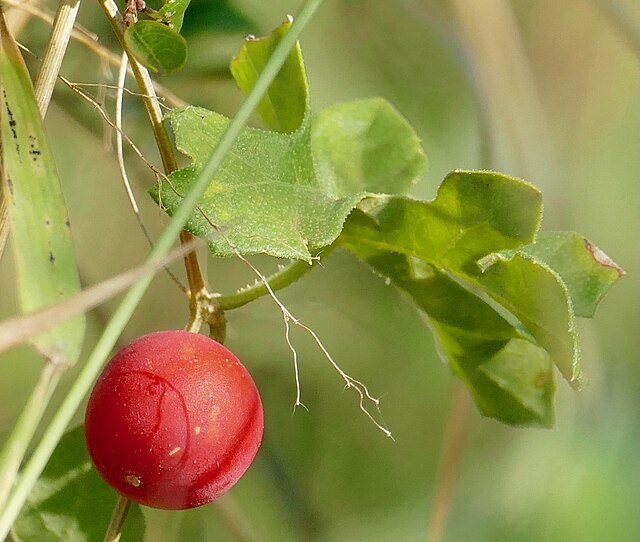Ceres in the mountainous Koue Bokkeveld in Western Cape is leading 2025’s production campaign for sweet cherry (Prunus avium) cultivars in South Africa.
According to Saffarazzi, industry marketing leader Tru-Cape expects a 5 to 7% bigger crop than the frost-hit 2024 equivalent.
Soluble sugar levels are also up at 25º Brix, above other years when levels oscillated between 18 and 22º. The current crop’s rising sweetness owes to mild sunshiny weather at the blooming stage and timely rain during the growth phase.
Thanks to this combination, fields near Ceres were already harvesting by October 29, 2025, a week ahead of the median annual start.
New Larger Varieties
Because of its colder clime than most of the Western Cape, the mountainous region has increasingly suited low-chill varieties.
One of these is the Royal Helen, a sweet type originally from California that propagates large fruits.
And large sizes are South Africa’s current most in-demand cherry exports, especially 24 mm sizes, which Royal Helen satisfies.
According to Nico Verhoef, financial director of Witzenberg Properties via Farmers Weekly, customers are today preferring sizes larger than 22 mm.
South Africa’s stone fruit industry’s watchdog, Hortgro, already indicates uptick yield gains for the variety. The agency’s 2025 CherrieZA forecast projects Royal Helen to increase yields by 32% year-on-year (y-o-y), while Lapins by 42%.
Lapins are an award-winning large sweet cultivar from a cross between Van and Stella strains.
Also doing well in Ceres is the acid sweet Royal Hazel from California’s Zaiger Genetics and the self-fertilizing Royal Tioga.
For the long haul, South Africa’s major growers such as Dutoit have since 2019 been trialing over ten novel varieties.
Results show that the best-performing types across the 700 hectares under sweet cherries in South Africa, as of 2024, are those in cool places. Leading cool areas include Clocolan in Free State and Koue Bokkeveld, near Ceres. The stats below take this cultivation exclusivity further through salient facts on the national sweet cherry profile.
South Africa Sweet Cherry Statistics
Commercial cherries are a relative newcomer in South Africa’s specialty fruit scene, with 40% of current orchards dating back to 2017. According to the South Africa Online Pty, SA provides only 0.1% of the world’s sweet cherry supplies annually. Annual production averages below 10,000 tonnes, exclusively from sweet cherry (Prunus avium) cultivars. The few black or tart cherries that the country grows ends up in the local baking industry. Some 22% of this amount undergoes export while 56% enjoys robust home utility as raw fruit or in desserts.
Ceres, a town in the Western Cape, is the cradle of cherry cultivation in the country, with the first sowing going back to 1890. But it would be Clocolan in Free State that would cultivate cherries for commercial purposes in 1904.
Where do sweet cherries grow most in SA?
Areas with mild summers and long winters with optimal -8º and 8ºC growth phase temperatures lead in sweet cherry production in South Africa. One of these is Ceres in Western Cape, which helps the province produce 61% to 71% of the national annual cherry crop. Other areas include Ficksburg and Clocolan in Free State, which helped the province claim an annual national production share of 13% before 2018. Likewise, cool areas of the Northwest make the Province the provider of 10 to 15% of the national harvest.
Which major sweet cherry cultivars grow in South Africa?
South Africa grows traditional cherry types such as Bing, Rainier and Sweetheart. New commercial cultivars include Van, Stella, Red Helen, Royal Tioga and Lapins.
